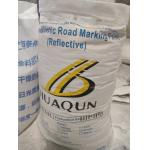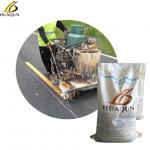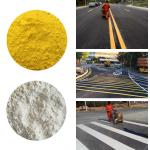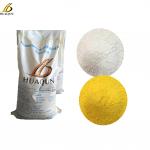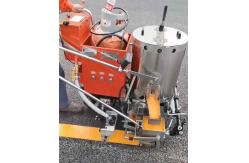High-Visibility and Skid-Resistant Thermoplastic Powder Paint for Safe Road Markings Product Description
Thermoplastic paint is a durable, heat-applied road marking material with resins, pigments, and glass beads for reflectivity. Used for traffic lines and symbols, it lasts 3-5 years, offers high visibility, and bonds well to roads. Applied at 200-220°C, it’s cost-effective for high-traffic areas but needs careful surface prep and is hard to remove. Main Features of Thermoplastic Paint: -
Composition: Made from synthetic resins, plasticizers, pigments, and glass beads for reflectivity. -
Application: Applied at 200-220°C using specialized equipment, solidifies quickly upon cooling. -
Durability: Lasts 3-5 years, resisting wear from traffic and weather. -
Visibility: High reflectivity, especially at night, due to glass beads. -
Versatility: Available in colors (white, yellow, etc.) for road lines, crosswalks, and symbols. -
Adhesion: Bonds strongly to asphalt and concrete surfaces. -
Skid Resistance: Provides good traction for vehicles and pedestrians. Advantages of Thermoplastic Paint: -
Long-Lasting: Reduces maintenance and reapplication frequency compared to regular paint. -
Cost-Effective: Higher initial cost offset by extended lifespan, ideal for high-traffic areas. -
Enhanced Safety: Superior visibility and skid resistance improve road safety. -
Quick Application: Fast-drying, minimizing traffic disruptions. -
Eco-Friendly Options: Low-VOC formulations available, reducing environmental impact. -
Versatile Use: Suitable for highways, urban roads, parking lots, and airports. How to Use Thermoplastic Road Marking Paint: -
Prepare the Surface: -
Clean the road (asphalt/concrete) to remove dirt, oil, and debris. -
Ensure the surface is dry and free of moisture. -
Fill cracks or repair damaged areas. -
Prime (if Needed): -
Mark the Layout: -
Outline markings (lines, symbols, crosswalks) using chalk, tape, or stencils. -
Heat the Thermoplastic: -
Load thermoplastic material into a melting kettle or preheater. -
Heat to 200-220°C, stirring for a uniform molten consistency. -
Apply the Paint: -
Small Areas: Use a handliner or screed box to pour and spread molten thermoplastic evenly (1.5-3 mm thick). -
Large Areas: Use a road marking machine to extrude or spray the material. -
Optionally, sprinkle glass beads on wet surface for reflectivity. -
Cool and Set: -
Allow 5-10 minutes for cooling and hardening, depending on weather. -
Keep traffic off until fully set. -
Inspect and Clean: -
Verify thickness, adhesion, and alignment. -
Remove stencils and clean equipment. Tips: -
Apply in dry, warm conditions (above 10°C). -
Wear protective gear (gloves, masks) due to high temperatures. -
Follow manufacturer instructions for equipment and material.




Technical Specification
| Density(g/cm3) | 1.8-2.3 | | Softening point (℃) | 90-125 | | Compressive Strength(MPa) | ≥12 | | Glass bead content(%) | 0-30% | | Liquidity | 35±10 | | Packing | 25kg/bag | | Color | White/Yellow/Blue/Red/Green/Customized | | Executive standard | JT/T280-2004/AASHTO/BS3262/Customized | | Appearance | Powder | | Construction temperature | 180℃-220℃ | | Whiteness | 70-85(Customized) | | Inverse coefficient | 50-550 | | Warranty | 12 months | | Storage Method | Avoid light and moisture | | Packing Size | 45×70×5CM |
 |



